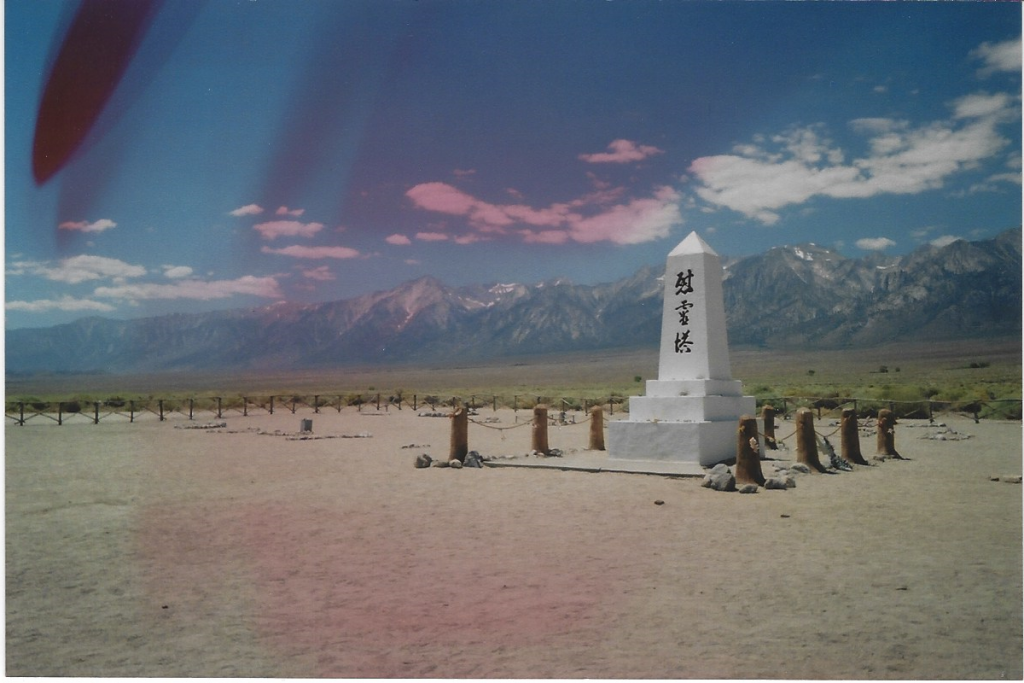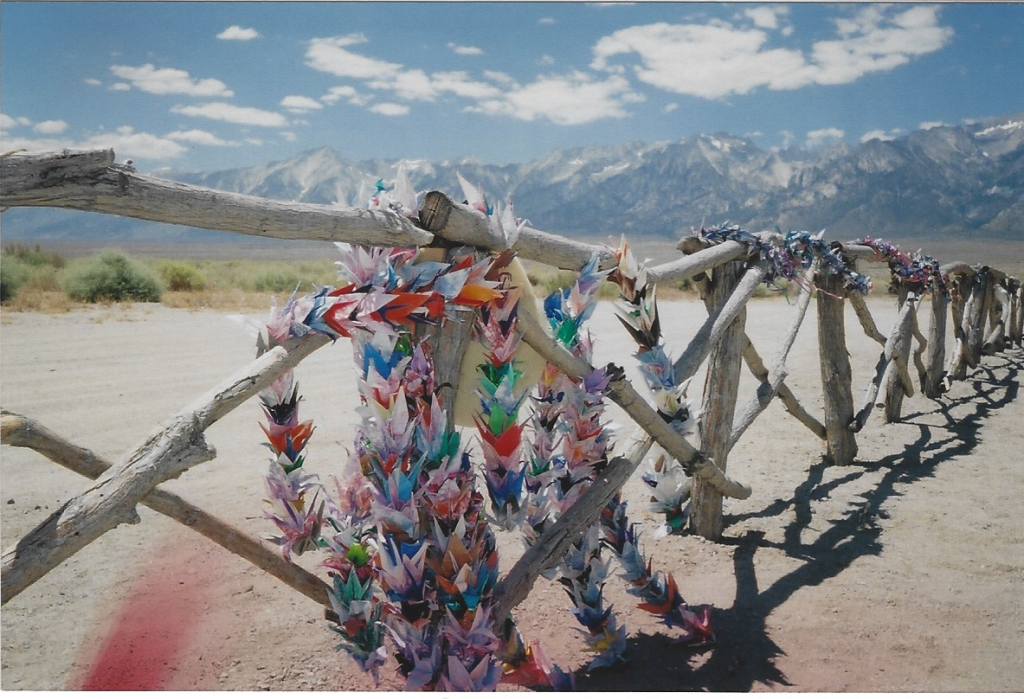Blog post about my visit to Manzanar War Relocation Center in Inyo County, California

On a road trip a few years back, I was Southbound on U.S. 395 through the Owens Valley South of Bishop, California. This area is roughly between Fresno and Death Valley National Park with wide open desert views. The “war relocation” words caught my attention. While my stop there was not planned, it was worth the time!
Quick history notes from the National park service website:
Manzanar National Historic Site (U.S. National Park Service) (nps.gov)
-Owens Vally Paiute occupied the area for thousands of years. As “Americans” sought farmable land outside of Los Angeles, the Army forced the Paiute out.
-after the Japanese attack on Pearl Harbor in Hawaii in 1941, the Federal government was suspicious of all individuals from Japan or of Japanese descent. Those living on the West coast came under scrutiny.
-in 1942, President Franklin Roosevelt signed an Executive Order authorizing the forced removal of all “enemy aliens” from the West coast. Individuals from Japan and their descendants were the primary target group.
-the Federal government leased the land from the City of Los Angeles to create the War Relocation Center
-the National Park Service is now the guardian of the War Center site to preserve it. The original gym building is now a visitor center, with an extensive collection of 1940s newspapers, posters, and other material, showing the anti-Japanese attitude of the government at the time
The Park Rangers actively seek information from individuals and families that have ties to Manzanar. During my tour of the museum an older woman approached the Rangers. She was a prisoner in the camp with her family as a young child!
-over 11,000 Japanese-Americans lived in or passed through Manzanar. It is historic as the first of 10 Japanese relocation centers set up across the U.S. The youngest prisoners were newborns, the oldest in their 80s.
Remembering Manzanar Documentary (youtube.com)
The Manzanar Committee
The Manzanar Committee is a non-profit organization. It is working to increase awareness of the Japanese Internment Camps. The committee honors former internees with an annual pilgrimage in April from Los Angeles. They encourage others to visit the War Relocation Center:
Who We Are – Manzanar Committee
Here is the link to a story about the tragic death of prisoner Giichi Matsumura in the mountains near Manzanar:
manzanar cemetery

The cemetery is located on the Northwest side of the camp. It “opened” two months after the camp received the first prisoners. It is just outside of the boundary for the living area. The cemetery is on the opposite side of the site from the main entrance. The first person to die in the camp was 62 year old widower Matsunosuke Murakami. Hundreds of fellow prisoners attended the funeral. His grave remains on site. He did not have any family members to relocate the bones after Manzanar closed in 1945.
The link below is for the National Park’s page about the cemetery at Manzanar. It indicates that 150 prisoners died at the camp. Most of them were cremated. That made it easier for family members to take the ashes home after the camp closed. The cemetery had 14 graves. Six of those remain today. The famous monument to the dead is featured in many articles about Manzanar. It was designed by prisoner and Buddhist Minister Shinjo Nagatomi. He worked with fellow prisoner and Master Stonemason Ryozo Kado. They collected 15 cents from every Manzanar family to pay for the materials he used to build the monument.
The Kanji symbols on the East side of the monument translate to “Soul Consoling Tower.” On the West side, “Erected by the Manzanar Japanese August 1943.”
History of the Manzanar Cemetery (U.S. National Park Service) (nps.gov)

The photo above shows strings of 1000 Origami cranes hung on the cemetery fence. The practice of hand folding the cranes is known as Senbazuru. They symbolize healing and sending prayers to heaven.
About the author – Cultures and Graves
Leave a Reply